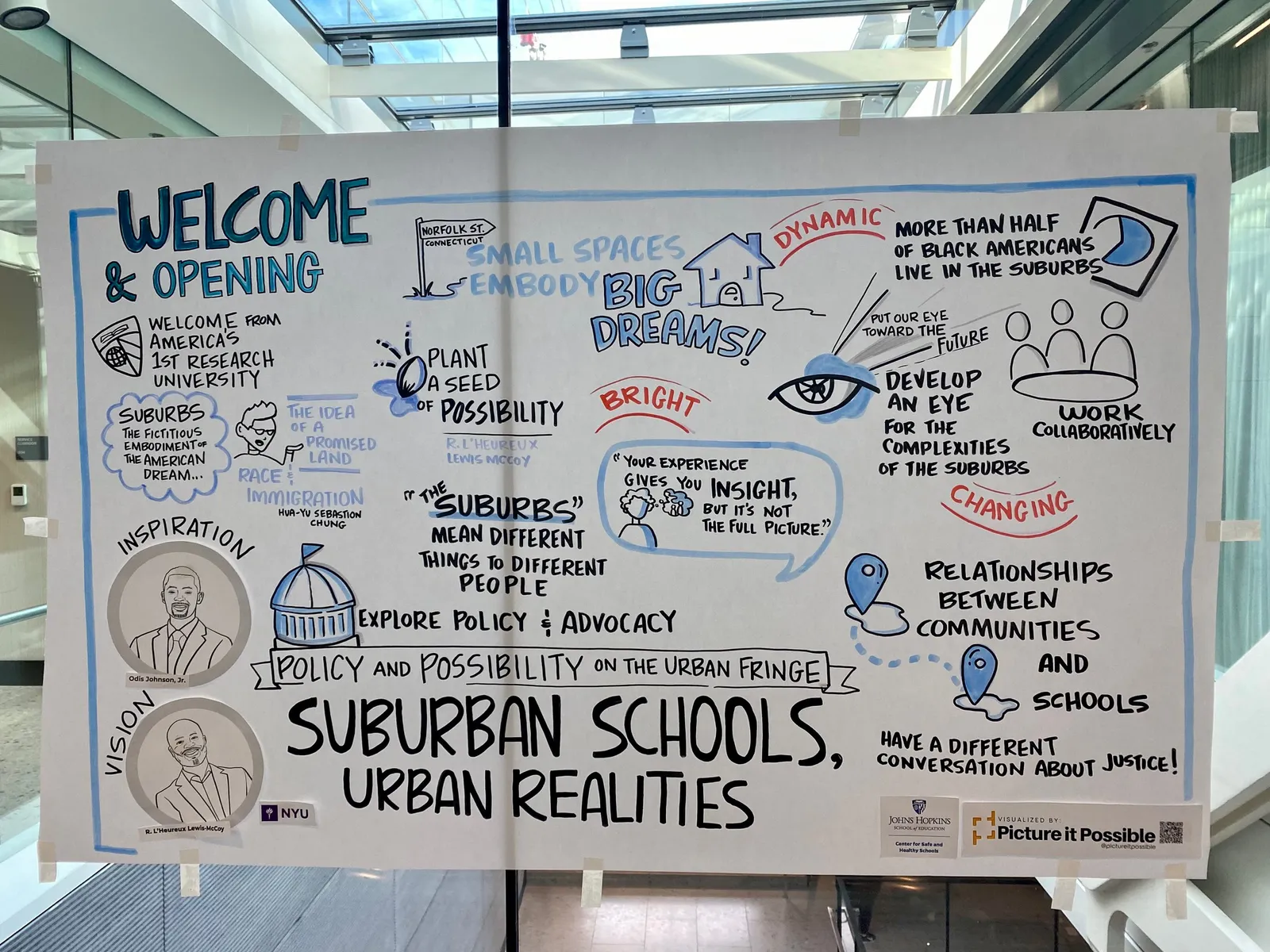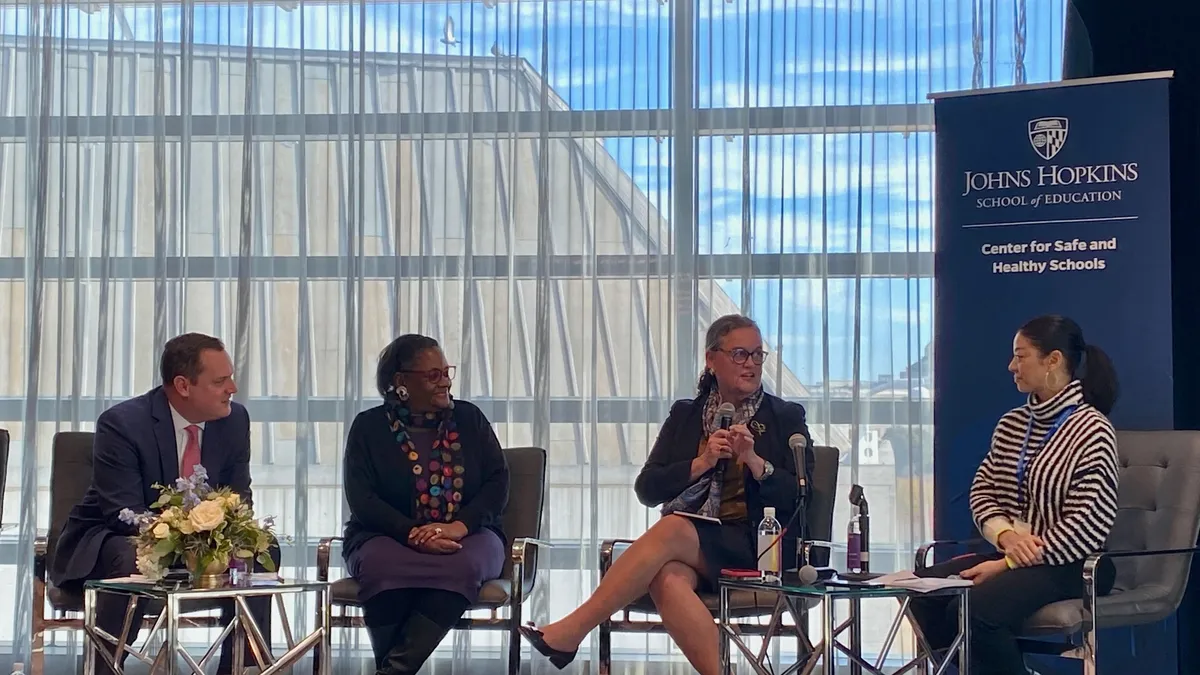WASHINGTON — An increasingly diverse majority of the nation's student population attend suburban schools. As a result, these school systems face a growing need to address unique concerns around educational equity, said panelists at a two-day conference this week co-hosted by the Johns Hopkins School of Education’s Center for Safe and Healthy Schools and New York University Steinhardt School’s Metro Center.
Panelists spoke about a variety of factors that can impact education and educational experiences in the suburbs, such as housing, teacher preparation, student belonging, parent engagement, curriculum and student discipline.
For students of color, the feeling of belonging and being their authentic selves can play a large role in their educational experiences, said Gabriel Rodriguez, an assistant professor in the Department of Education Policy, Organization and Leadership at the University of Illinois at Urbana-Champaign, during a Nov. 30 session.
Pre-teacher training on relationship-building with students can be one way to improve student perceptions that they are welcomed, he said.
Suburban schools also need to engage with parents, Rodriguez said.
"I know that schools can't do it all, but in some circumstances, I think schools can play a pivotal role in building community with parents and fostering that environment," Rodriguez said.
Adria Welcher, chair of the sociology department at Morehouse College in Atlanta, said her research on race and class inequalities in educational outcomes and where people choose to live found first-generation Black middle-class parents are focused on maintaining their status and understanding the "systems" around them.
Parents have questions like where to live, where to enroll their child in school, and who's setting the pace for the community, Welcher said on Nov. 30. "What I find is, these parents don't know."

Diversity in suburban schools
Peggy Carr, commissioner of the National Center for Education Statistics, shared data on Nov. 29 showing that in 2021, a majority of public school students (38.9%) attended suburban schools. Some 29.8% attended city schools, 20% went to rural schools and 10.8% attended in a town.
NCES defines suburban schools as those located outside a principal city, and inside an urbanized area.
More than half of public school students attended suburban schools in eight states: Connecticut, Florida, Maryland, Massachusetts, New Jersey, Pennsylvania, Rhode Island and Utah.
Regarding the increasing diversity of students at suburban schools, the share of Asian/Pacific Islander students in the suburbs rose from 6% in 2011 to 8% in 2022, and the Hispanic student population increased from 22% to 27%. The proportion of students of two or more races also jumped, from 2% to 5%.
Carr added that the Hispanic student population is also growing in cities, towns and rural communities. "We are becoming browner as a nation," Carr said.
The population of White students in suburban schools, meanwhile, decreased from 55% in 2011 to 46% in 2022. The Black student population shrank slightly from 14% to 13%. Additionally, both the Black and White student populations fell in cities between 2011 and 2022.
When looking at specific suburban communities, however, the demographics can differ, Carr said. She highlighted suburban communities around Washington, D.C., as examples.
In Fairfax County, Virginia, the student population for the 2021-22 school year broke down as 49% White, 20% Asian, 16% Hispanic or Latino, and 10% Black or African American. But to the north of Fairfax County, in Prince George's County, Maryland, 61% of students identified as Black or African American, 19% as Hispanic or Latino, 12% as White and 4% as Asian that same school year.
Answering a question about what the U.S. education system is getting right and what needs improving, Michelle Reid, superintendent of Fairfax County Public Schools, said on Nov. 30, "I don't believe in public education today that we are getting the results for every child — each and every child — that we should be."
Reid added: "There is nothing wrong with our children. There's nothing wrong with our educators. There's nothing wrong with our families. But our systems create barriers for some children.”














